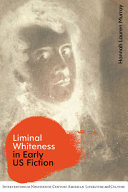Murray‘s study of very early American writers looks at white racial identity and fears of losing whiteness in the new nation in both canonical and obscure fiction, but ultimately becomes about current white American racial anxieties. She suggests that white characters hovering between life and death challenged fixed racial categories. Enlightening and well written


















